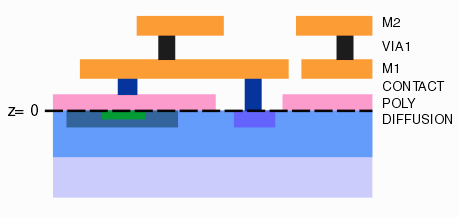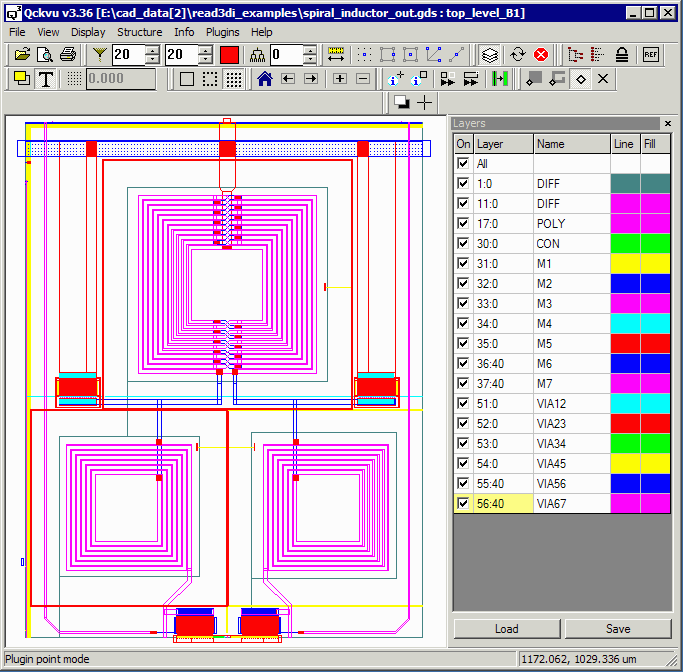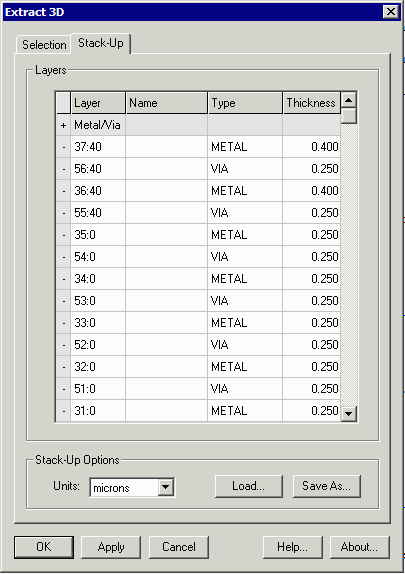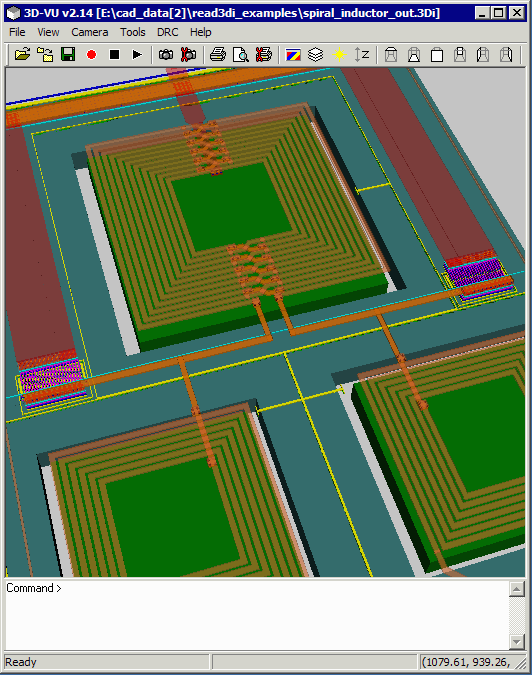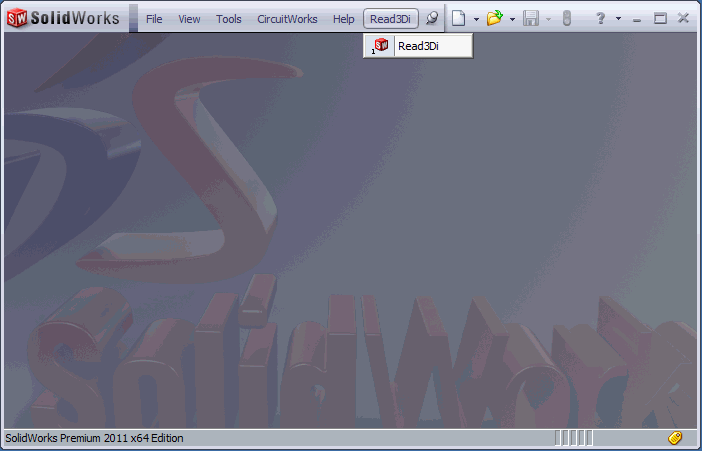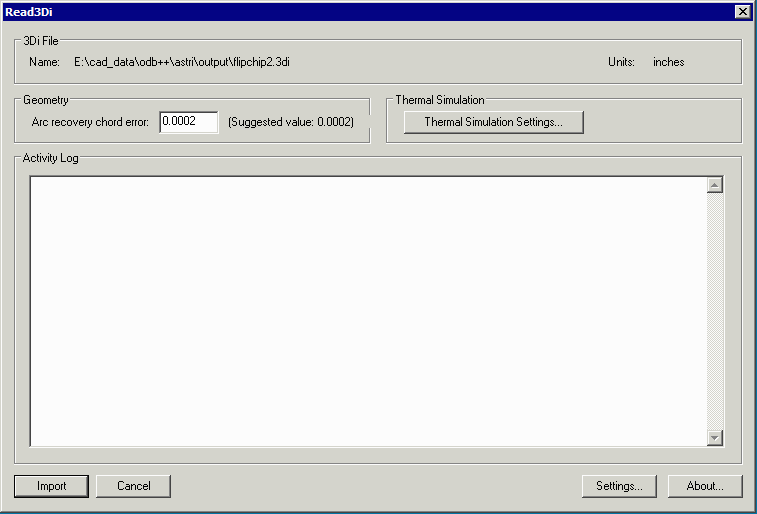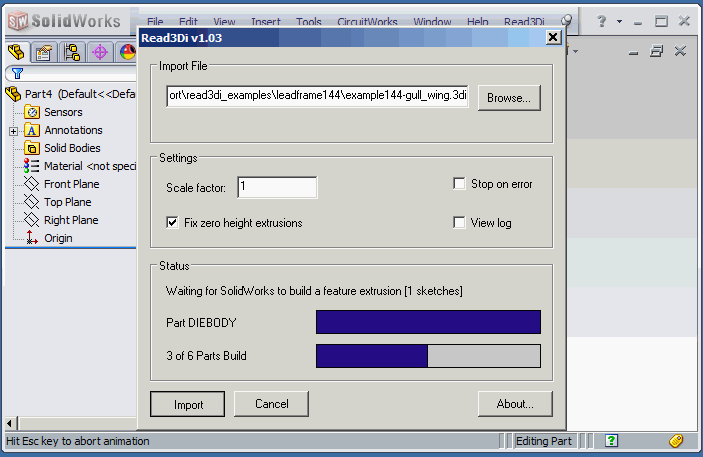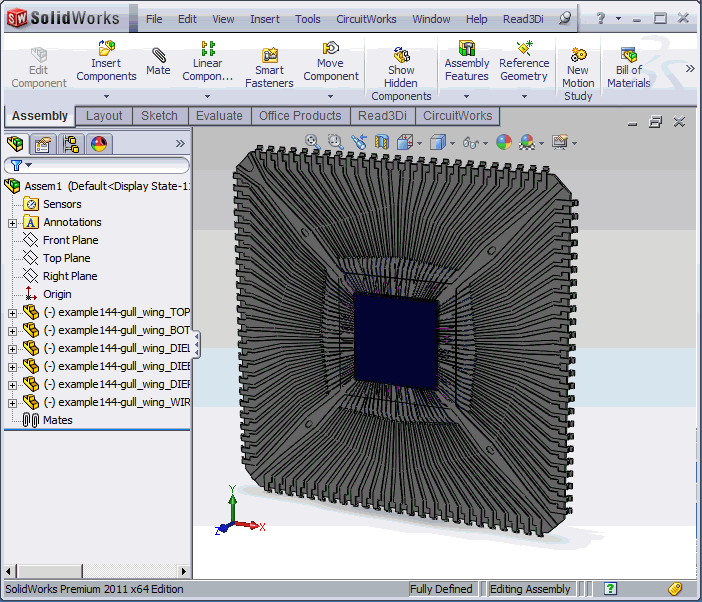Qckvu3
Artwork's Qckvu3 can be equipped with a simple 3D Extractor plug-in. The plug-in allows the user to specify a window and to define a stackup of layers. There are four types of layers:
DIFFUSION - these start at Z=0 and extrude downward by the given amount. They do not stack up. You can define as many diffusion layers as desired.
CONTACT - this is a special via layer which goes between M1 and either POLY (if POLY is present below M1) or to the top of the diffusion layer.
POLY - this layer starts at the Z=0 and extrudes upward by the given thickness
METAL - these layers start on top of POLY and stack up. Normally there is a via layer between each metal layer.
VIA - these layers lie between METAL layers and provide connection between two adjacent metal layers.
